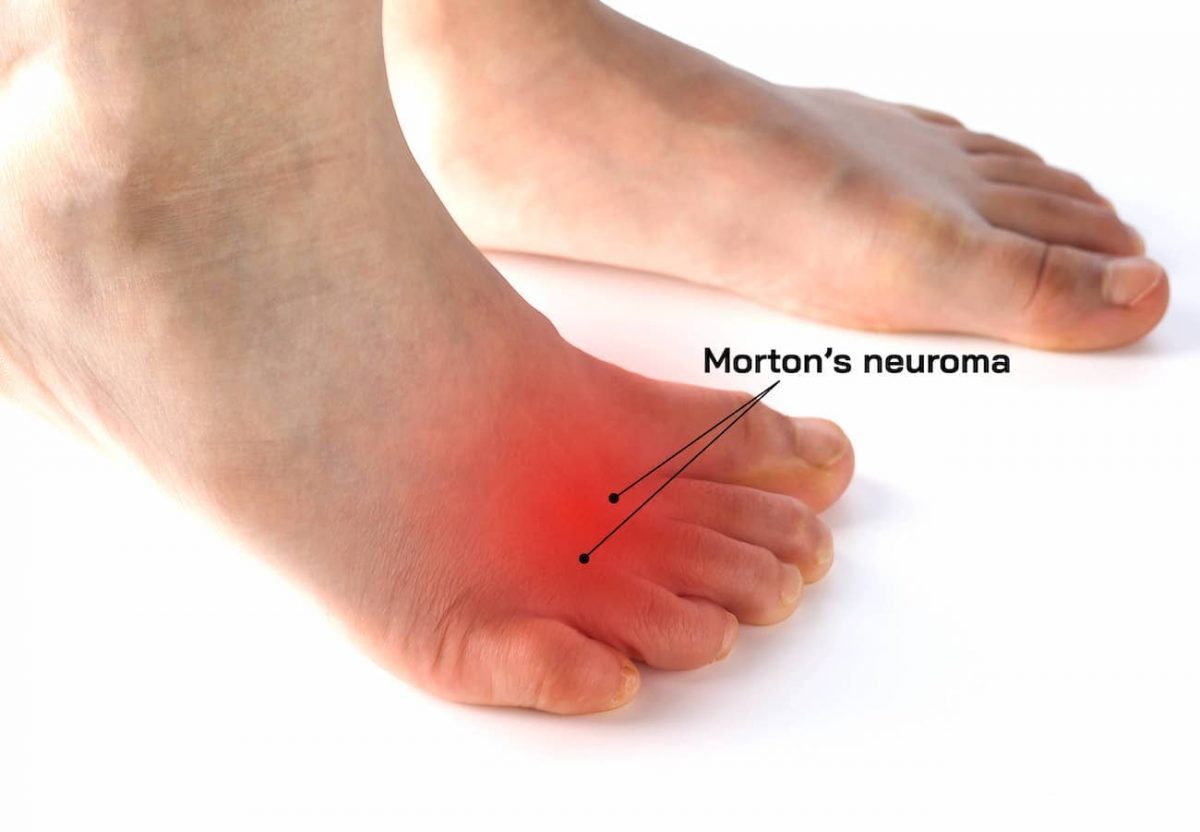
Neuromas can be a source of chronic foot pain, affecting individuals’ mobility and quality of life. In the following, we delve into the world of neuroma surgery and our approach to this condition. From diagnosis to surgical techniques and recovery, gain valuable insights into the intricacies of neuroma surgery and the positive impact it can have on your life.
Our feet contain lots of nerves, and we are reminded of that fact every time you stub your toe or drop something on your foot.
Those kinds of external foot trauma, in addition to unavoidable genetic inclinations, can inflame the nerves in your feet and cause you plenty of problems and pain.
One such nerve issue is called a neuroma.
While this condition can often be treated with cortisone injections, orthotics, or chemical destruction of the nerve, alleviating the pain and discomfort can sometimes require surgery.
What Exactly Are Neuromas?
A neuroma sometimes called a “Morton’s Neuroma,” refers to the swelling of nerve, usually on the ball of the foot, caused by trauma, compression, or genetics.
This swelling left untreated, can lead to permanent nerve damage.
Typically, a neuroma will develop because of abnormal movement of the metatarsals, long bones behind the toes.
Small nerves traverse the spaces of the metatarsals, splitting at the base of the toes into each individual toe.
It is at this fork in the toes where the nerve can become pinched and swollen, forming a neuroma.
Burning pain, tingling, and numbness in one or two of the toes is a frequent neuroma symptom.
What Is Involved With Neuroma Surgery?
If initial, non-invasive therapies fail to address the pain and inflammation, surgery will likely be recommended.
Neuroma surgery involves the removal of the enlarged and inflamed nerve, usually between the metatarsal heads in the ball of the foot.
In this outpatient procedure, the patient is given a local anesthetic or intravenous anesthesia.
The surgeon will then make a small incision on the top of the foot above where the neuroma is located, most often in the area between the second and third toes or between the third and fourth toes.
The troublesome nerve is then identified, cut, and removed from the foot.
The incision is then closed with stitches and a dressing is applied to protect the area from infection and irritation.
Post-Neuroma Surgery Care and Recovery
You will be sent home when your surgery is over, though you should arrange for someone else to take you as you will be recovering from anesthesia and will not want to put pressure on your foot.
Your doctor may prescribe you some painkillers to alleviate any post-operative pain.
Neuroma surgery patients can usually walk on the treated foot in a post-surgical shoe for the first two to four weeks after surgery.
During that time, you should try to keep your foot elevated (above the level of your heart) as much as you can and stay off of your foot unless necessary.
Of course, your doctor will provide you with specific instructions after your neuroma surgery.
Following those instructions to the letter can be as important to the success of the procedure as the surgery itself.
Call Our Foot and Ankle Specialists at JAWS Podiatry Today
Neuroma surgery is just one of the many ways our talented specialists treat toe, foot and ankle problems at JAWS Podiatry.
We will look at all possible alternatives to see if a non-surgical treatment can solve your problem.
If we do recommend surgery, our experienced podiatric surgeon will perform your surgery with the highest level of care and precision, using the most advanced technology and methods.
Please call us today at (954) 922-7333 or contact us online to schedule a consultation.
- The Life-Changing Power of Cosmetic Foot Surgery - February 27, 2023
- What Are The Most Common Pediatric Foot Conditions? - October 5, 2020
- 4 Important Things To Know Before Having Foot Surgery - September 21, 2020



